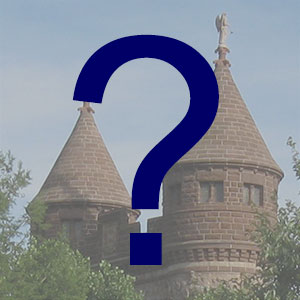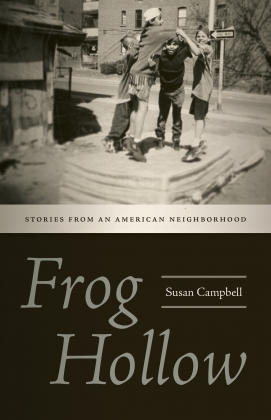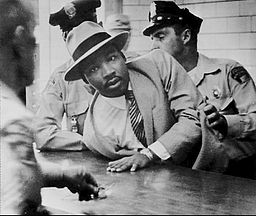A famous Hartford restaurant opened in the basement of the United States Hotel on State Street in 1845. Name it.
Give up? Here’s the answer.
News about the history of Connecticut's capital city. A companion to HartfordHistory.net
A famous Hartford restaurant opened in the basement of the United States Hotel on State Street in 1845. Name it.
Give up? Here’s the answer.
Campfield Avenue is named after a military encampment created during which of these wars:
A) King Philip’s War;
B) the Revolutionary War; or
C) the Civil War.
Here’s the answer: https://www.hartfordhistory.net/trivia.html

Dillon Stadium, which recently underwent a complete renovation, opened in 1935 as Municipal Stadium but was renamed in 1956 to honor James H. Dillon. Who was he?

Hermann P. Kopplemann (1880-1957) rose from the immigrant neighborhood of Hartford’s East Side to found H.P. Kopplemann and Co., which eventually became Connecticut’s leading distributor of newspapers and magazines. But it was in the political realm where Kopplemann did his most important work, achieving several “firsts” in the process. What were they?
The answer is here: https://www.hartfordhistory.net/trivia.html.

A longtime Hartford business was the setting for one of painter Norman Rockwell’s more famous covers for the Saturday Evening Post, appearing in the May 19, 1956 issue. Which business was it? The answer is here.
Grace Fifield, a 47-year-old woman visiting Wethersfield from Newport, Vermont went to the Ringling Brothers Circus in Hartford’s North End on July 6, 1944 and never came home. Her family has assumed all these years that she was among the 168 people killed in the fire that swept through the big top that day. But because none of the bodies recovered that day were identified as hers, it could never be more than an assumption.
That may change as a result of a request Chief State Medical Examiner James Gill submitted last week to Hartford State’s Attorney Gail Hardy. According to the Hartford Courant, Gill wants a judge’s permission to exhume two of the five bodies that were never identified. He hopes technological advances made over the past 75 years will help him identify one of them–both female–as Fifield’s.
The newspaper says the move stems from its own investigation:
[Gill] started researching exhuming the bodies after the Courant began asking questions whether it would be possible, given the advances in DNA science, specifically genetic testing, to identify the unidentified circus fire victims. Rather than dig up all five unidentified bodies, Gill has targeted the two that could match the DNA of a surviving relative of a missing fire victim that the Courant located.
Fifield had brought two of her children with her to the circus; both of them survived.
The five unidentified bodies lie under numbered grave markers in Northwood Cemetery, on the Hartford-Windsor line.
The Courant has supplemented its article with a sidebar summarizing the fire, the worst disaster in Hartford history and one of the worst fires in American history. Here is HartfordHistory.net’s page on the fire.

Susan Campbell got to know the city’s Frog Hollow neighborhood as a longtime reporter and columnist for the Hartford Courant. Now she has poured that expertise into a new book that delves into the neighborhood’s long history as a hotbed of industrial, political, and cultural change. You can meet Campbell and buy a copy of her book, “Frog Hollow: Stories from an American Neighborhood,” at the Barnes & Noble UConn Hartford Bookstore today from 6 to 8 p.m.
If you can’t make it to B&N, you can still hear Campbell discuss her book on “Where We Live,” the Connecticut Public Radio talk show. Here’s the recording of today’s show, on which she was a guest.
Publisher Wesleyan University Press gives this description of the book:
Frog Hollow: Stories from an American Neighborhood is a collection of colorful historical vignettes of an ethnically diverse neighborhood just west of the Connecticut State Capitol in Hartford. Its 1850s row houses have been home to a wide variety of immigrants. During the Revolutionary War, Frog Hollow was a progressive hub, and later, in the mid-late 19th century, it was a hotbed of industry. Reporter Susan Campbell tells the true stories of Frog Hollow with a primary focus on the nineteenth and early twentieth centuries: the inventors, entrepreneurs and workers, as well as the impact of African American migration to Hartford, the impact of the Civil Rights movement and the continuing fight for housing. Frog Hollow was also one of the first neighborhoods in the country to experiment with successful urban planning models, including public parks and free education. From European colonists to Irish and Haitian immigrants to Puerto Ricans, these stories of Frog Hollow show the multiple realities that make up a dynamic urban neighborhood. At the same time, they reflect the changing faces of American cities. Features 40 illustrations.
You may also buy the book on Amazon.
Kudos to Fox 61 (WTIC-TV) for its recent profile of Aetna Ambulance, which began in 1945 in response to an ambulance shortage during the 1944 Circus Fire. The company, headquartered off Van Block Street, in the Sheldon/Charter Oak neighborhood, also made history as the city’s first African American-owned ambulance service. Here’s the Fox 61 video:
Several Hartford-area executives already have invested in the project, which has a projected budget of $1.5 million, according to the Journal. The investors hope this movie, named “Pep,” will raise Hartford’s profile the way another boxing movie, “Rocky,” did for Philadelphia in the 1970s.
The Hartford Business Journal reports that a New York-based production team is raising money to create a film on the life of Hartford boxer Willie Pep, with shooting to take place in the city.
“We have so many people speaking negatively about the state,” investor Manon Cox told the Journal. “It’s important for Connecticut to start creating some buzz, and whatever we can do to make that happen is good.”
Willie Pep was the professional name of featherweight boxer Guglielmo Papaleo, who was born in Middletown but trained to fight in Hartford. Starting in 1940, he won 63 straight fights. He held the featherweight title for six years, finishing his career with a record of only 11 losses out of 242 bouts. He achieved that record despite having to serve in the U.S. Navy during World War II and suffering serious injuries in a 1947 plane crash. Pep died at a Rocky Hill nursing home in 2006. Read more about him here, here, and here.
What Hartford institution disappeared on October 20, 1976?
Upon its construction on Charter Oak Avenue in 1876, Temple Beth Israel became Connecticut’s first purpose-built synagogue. With its twin domes and arched doors and windows, it also became an architectural jewel of the neighborhood. The congregation moved to West Hartford in 1935, but with the Charter Oak Cultural Center now operating there, the place remains as vibrant as ever, hosting everything from art exhibits and performances to free after-school programs for local kids.
But there’s a problem. As fund raisers put it: “The Rose Window, or more accurately the installation of multiple windows that form a visual centerpiece for our Bimah, is in serious disrepair. Nearly a century-and-a-half of harsh weather conditions have led to a potentially irreversible degradation of the stained glass, the frame, and the Bimah’s structural integrity. In short: it is in danger of collapse!”
A GoFundMe page has been set up for those interested in helping to restore the windows. Donations go to the Charter Oak Temple Restoration Association Inc., a certified charity.

Martin Luther King Jr., just 30 years old but already recognized nationally as a leader of the civil rights movement, walked onto the stage of Bushnell Memorial Hall on May 7, 1959.

In a speech entitled, “The Future of Integration,” King pointed to the U.S. Supreme Court’s ruling five years earlier that state laws establishing separate public schools for black and white students were unconstitutional:
“As a result of that decision, we stand today on the threshold of the most creative and constructive period of our nation’s history. To put it in Biblical terms, we’ve broken loose from the Egypt of slavery, we’ve moved through the wilderness of ‘separate but equal,’ and now we stand on the border of the promised land of integration.”
Since King’s talk was part of lecture series organized by the University of Hartford (itself just two years old at the time), the University has kept these audio excerpts from that night on its website.
King began his talk by recalling how he came to Connecticut in the summer of 1944 to pick tobacco in Simsbury. It was his first time outside the segregated South, and the way he was treated–especially on his weekend trips into Hartford–was far different than what he experienced at home. In a letter to his mother at the time, he wrote: “I never thought that a person of my race could eat anywhere but we ate in one of the finest restaurants in Hartford. And we went to the largest shows there.” (For more on King’s time in Connecticut, see this 2014 Associated Press article.)
The Bushnell wasn’t King’s only stop in Hartford that day in 1959. He also spoke at an interdenominational brown-bag lunch at the Asylum Hill Congregational Church and met with editors of the University of Hartford’s student newspaper. The editors included Reid MacCluggage, who went on to become managing editor of the Hartford Courant, publisher and editor of The Day of New London, and a U of H regent.
“I came away from that day knowing I had been in the presence of a great man,” MacCluggage recalled for the University in 2006, adding that “to many of us in the 1950s, the civil rights movement was only a Southern issue. Dr. King corrected that impression. Civil rights was a human issue.”